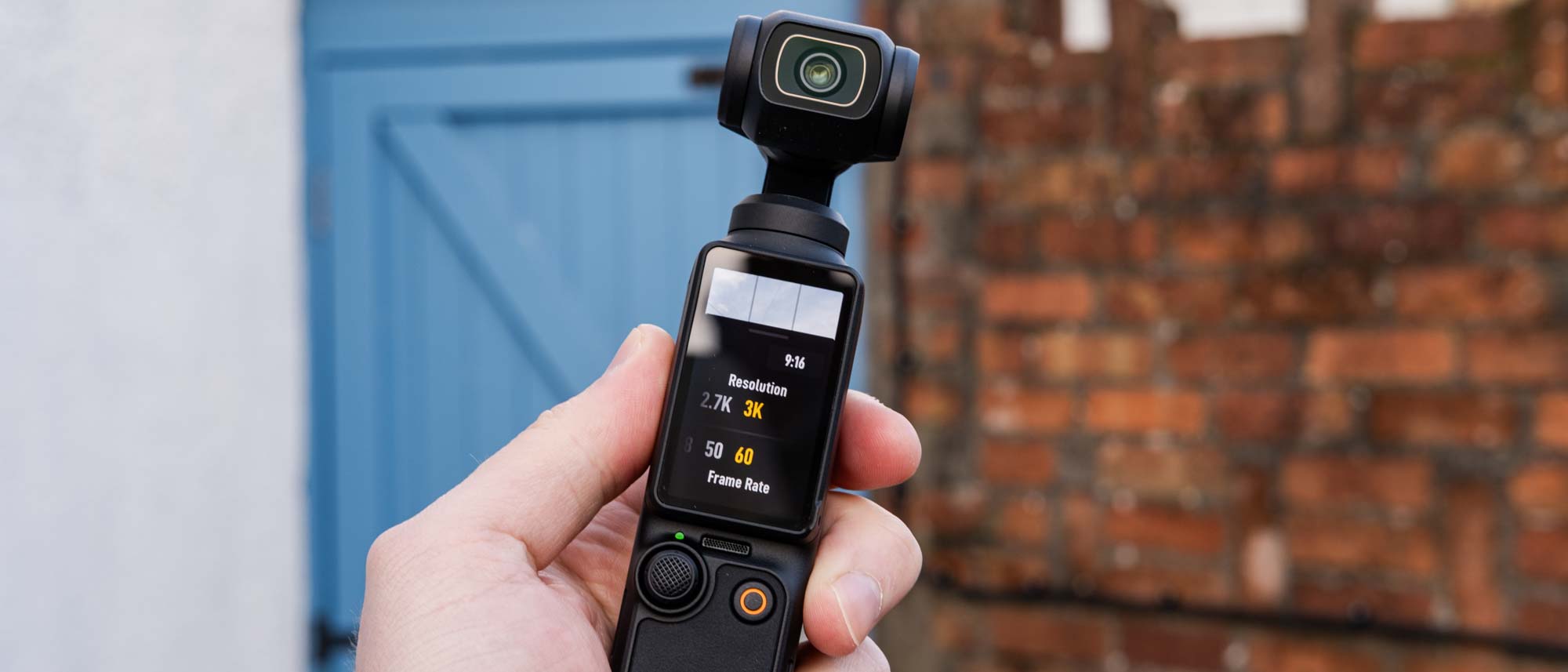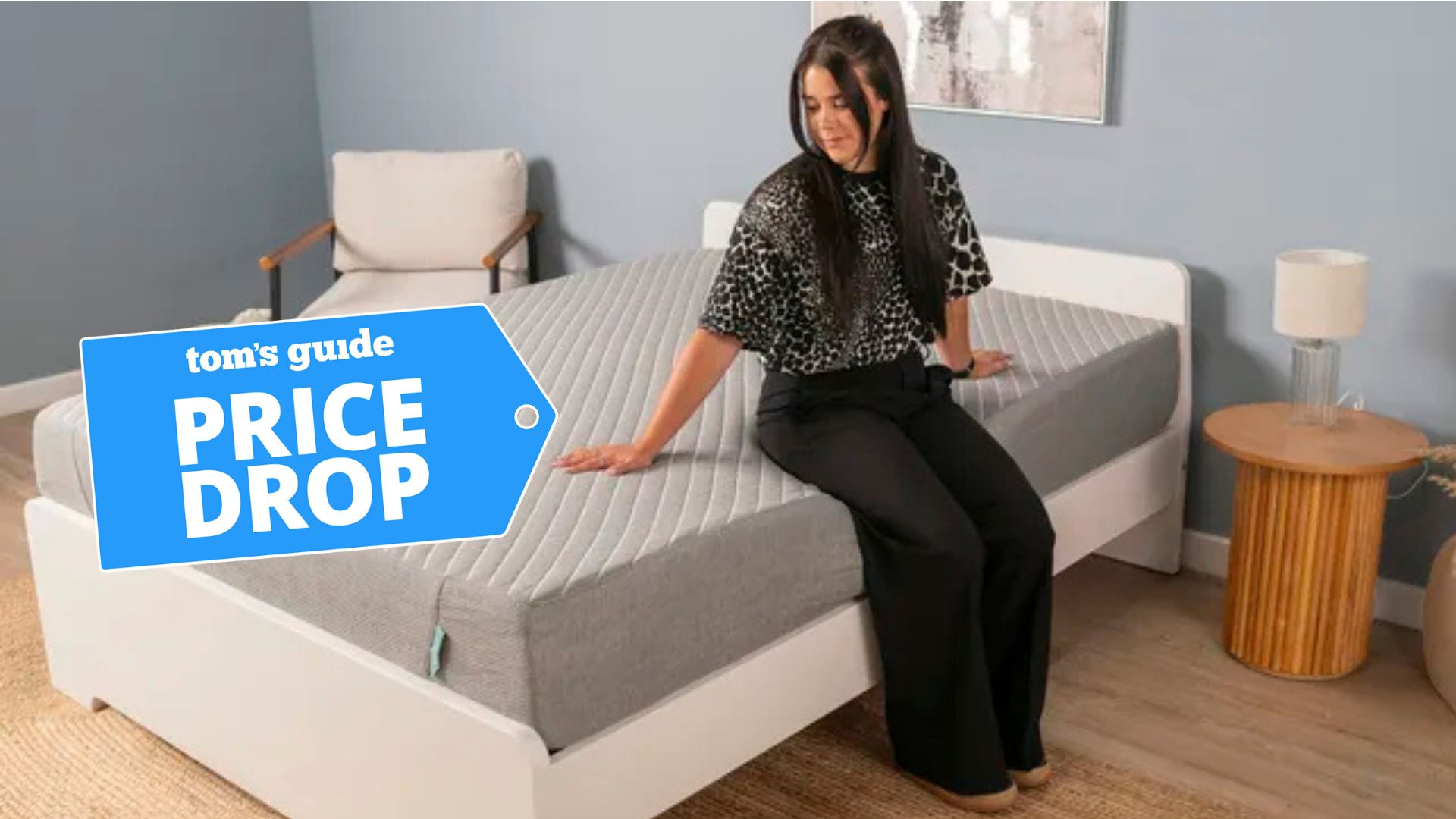Tom's Guide Verdict
The DJI Osmo Pocket 3 is a wonderful tool for vloggers and content creators, providing an affordable gimbal solution to give their video a professional look.
Pros
- +
Awesome stabilization
- +
Lovely 4K video
- +
Strong low light performance
- +
Superb build quality
- +
Good value bundles
- +
Great battery life
Cons
- -
No 3rd party wireless mic support
- -
App could be better
Why you can trust Tom's Guide
Starting price: $519
Max video resolution: 4K/60p
Sensor: 1-inch CMOS
Stabilization: Gimbal
Screen: 2-inch touchscreen
Size: 5.5 x 1.67 x 1.32 inches
Weight: 6 ounces
Water resistance: none
Battery: 1,300 mAh
The DJI Osmo Pocket 3 is a pocket-sized 4K video camera with a built-in gimbal, providing professionally stabilized video for a fraction of the price of a full gimbal and video camera setup.
As you might’ve guessed from the name, this isn’t DJI’s first foray into handheld mini-gimbal cameras. DJI is, at the time of writing, still selling the Pocket 2, which ostensibly provides users the same headline benefits: gimbal-stabilized 4K video.
However, the Pocket 3 features a number of upgrades over its older sibling, seriously improving its handling, interface and performance, which makes it a much more compelling package for the target market of vloggers and content creators, and perhaps even for pros looking for a pocketable B-cam.
That said, the Pocket 3 isn’t perfect. So, to find out whether this is the right camera for you, continue reading our full DJI Osmo Pocket 3 review.
DJI Osmo Pocket 3 review: Price and availability
The DJI Osmo Pocket 3 was released in October 2023 and costs $519 / £489 for the basic package, which includes the camera, a protective case, a small extension handle (with a thread for attaching accessories), a USB-C cable and a wrist strap.
We tested the Creator Combo, currently the only other bundle, which costs $669 / £619 and is well worth the extra spend. In addition to the camera and all the basic package kit, the Creator Combo also includes a wireless DJI Mic 2 (+ windscreen), a wide-angle lens attachment, a clip-on battery pack/grip, a mini tripod and a sturdy carrying case. Buying all those items separately would cost nearly $800, so the bundle represents a decent saving.
We’d definitely recommend at least buying a microphone and battery pack. There’s no removable battery so you’re stuck with the DJI battery pack as your only option. You could buy a third party mic, but only DJI mics work wirelessly with the Pocket 3, so you’d also need DJI’s accessories adapter to clip a wired mic onto. As such, it’s worth just going with the Creator Combo, which is best for ease and price.
DJI Osmo Pocket 3 review: Design and controls
The DJI Pocket 3’s design isn’t much different to the Pocket 2 — it’s a stick with a gimbal on top. It’s not pretty, but it’s functional, compact and lightweight. I’m a big fan of the minimalist coloring: matte black, pierced by orange accents.
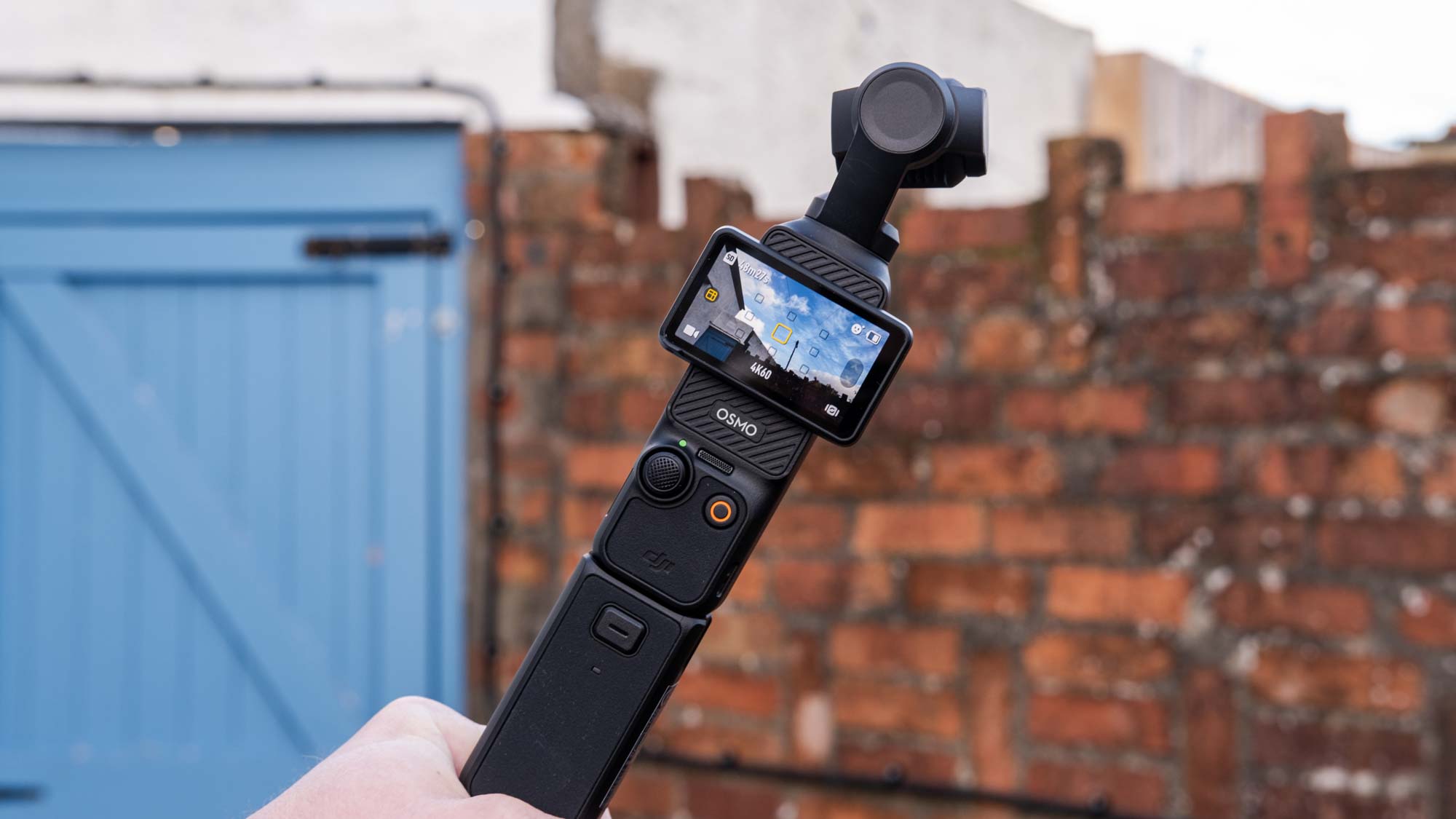
Build quality is fantastic. The camera body is built from sturdy metal and high quality plastics, while nicely damped buttons and the large touch screen give a premium feel. The gimbal and lens are obviously rather fragile, so you’ll want to be careful how you treat the camera when it’s in your pocket. Thankfully, the camera comes with a hard protective case, which adds very little size and weight.
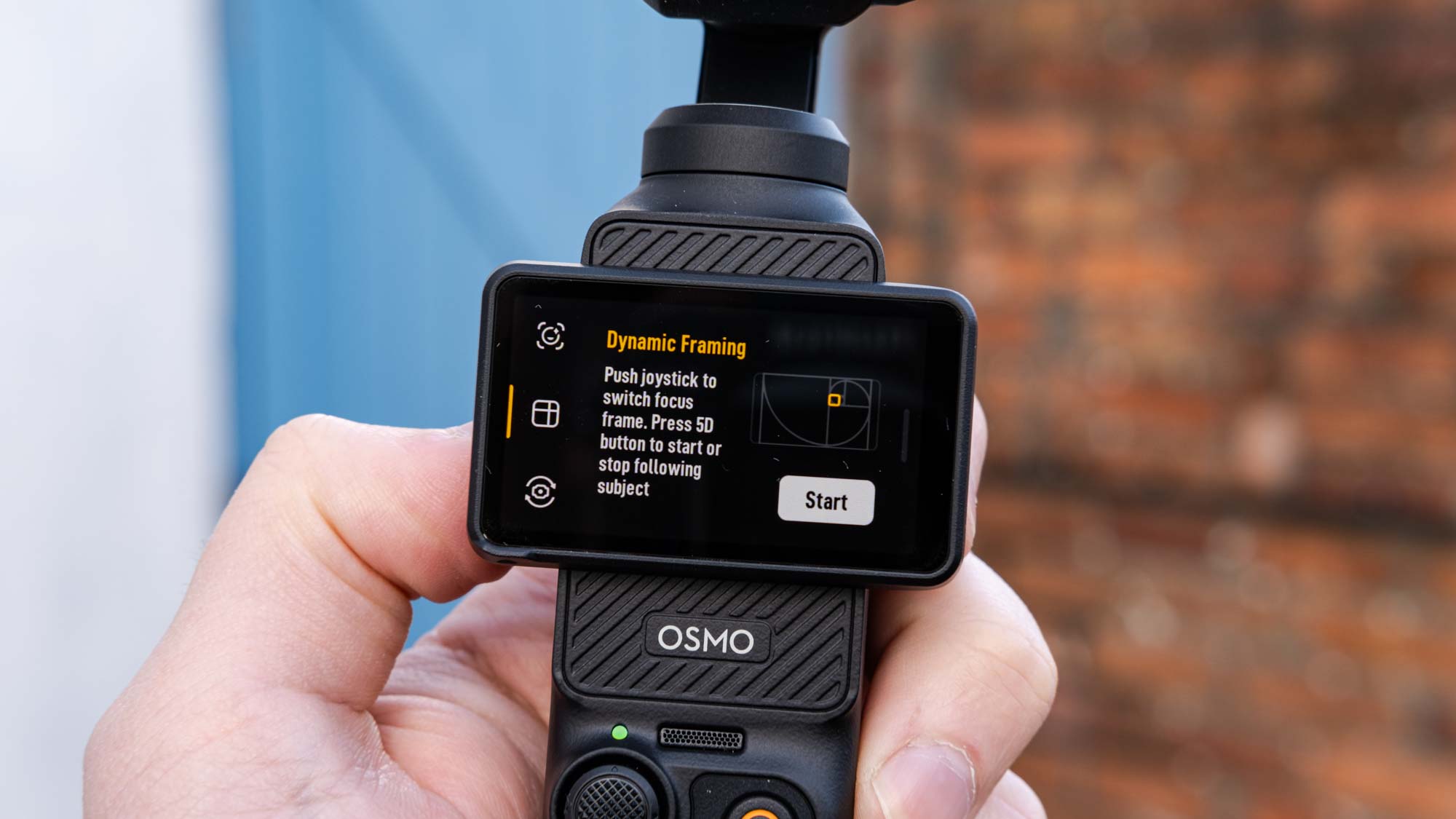
The 2-inch LCD touchscreen replaces the tiny 1-inch screen on the Pocket 2, which was that camera’s biggest drawback, leading to a frustrating user experience when shooting/playing video or changing settings. The new touchscreen fixes those issues: it’s bright and spacious, and makes using and navigating the Pocket 3 much easier. It also pivots 90 degrees to switch between horizontal and vertical shooting, which is cool. The screen looks a little awkward in horizontal orientation but doesn’t get in the way, especially when using a grip.
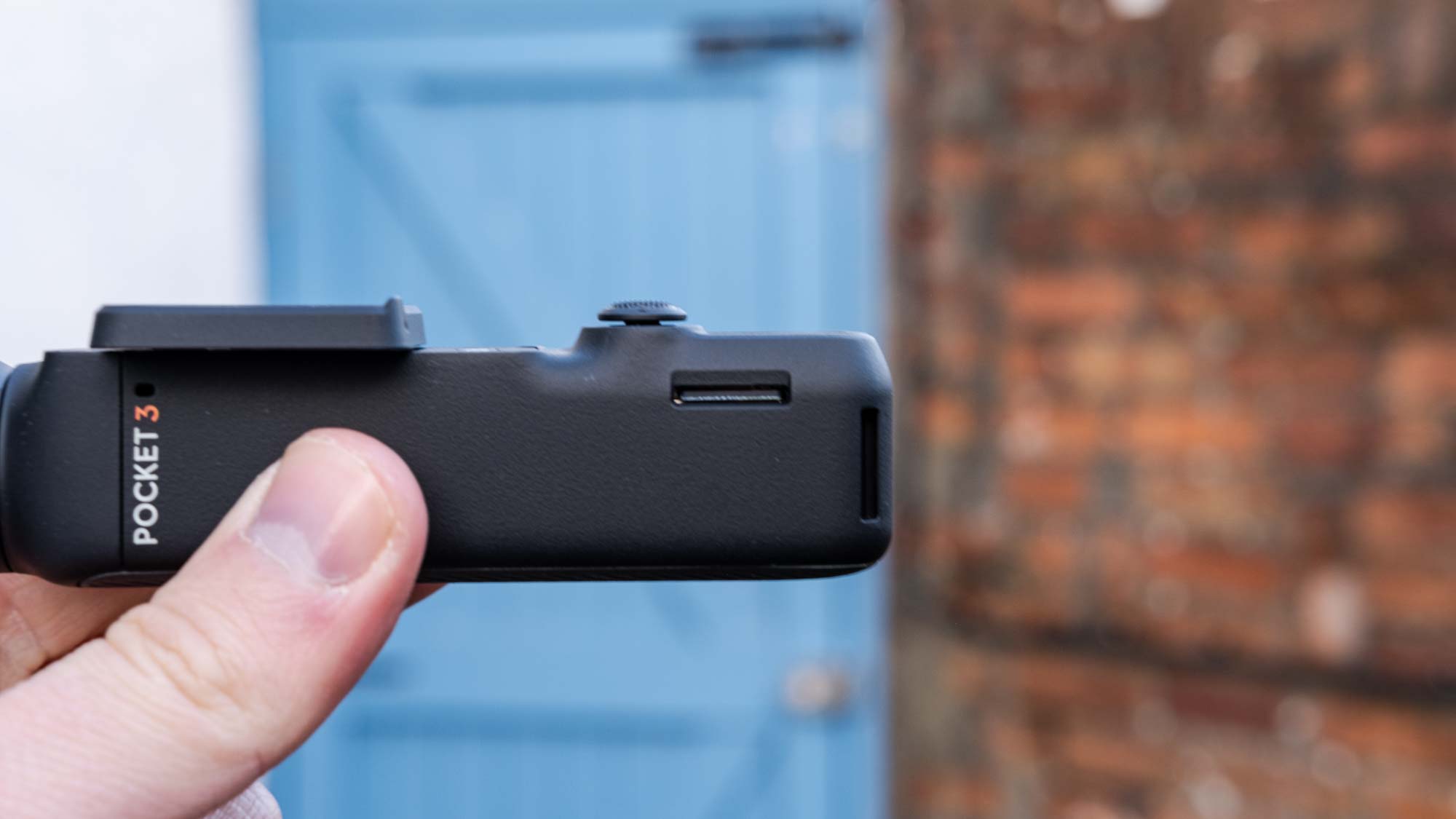
Controls and ports are minimal, although sufficient. There’s one button, one joystick, a micro-SD slot and USB-C port for accessories. The spare battery-grip and the mini grip both have a USB-C port of their own, which is useful as they both take up the standard USB-C port when connected.
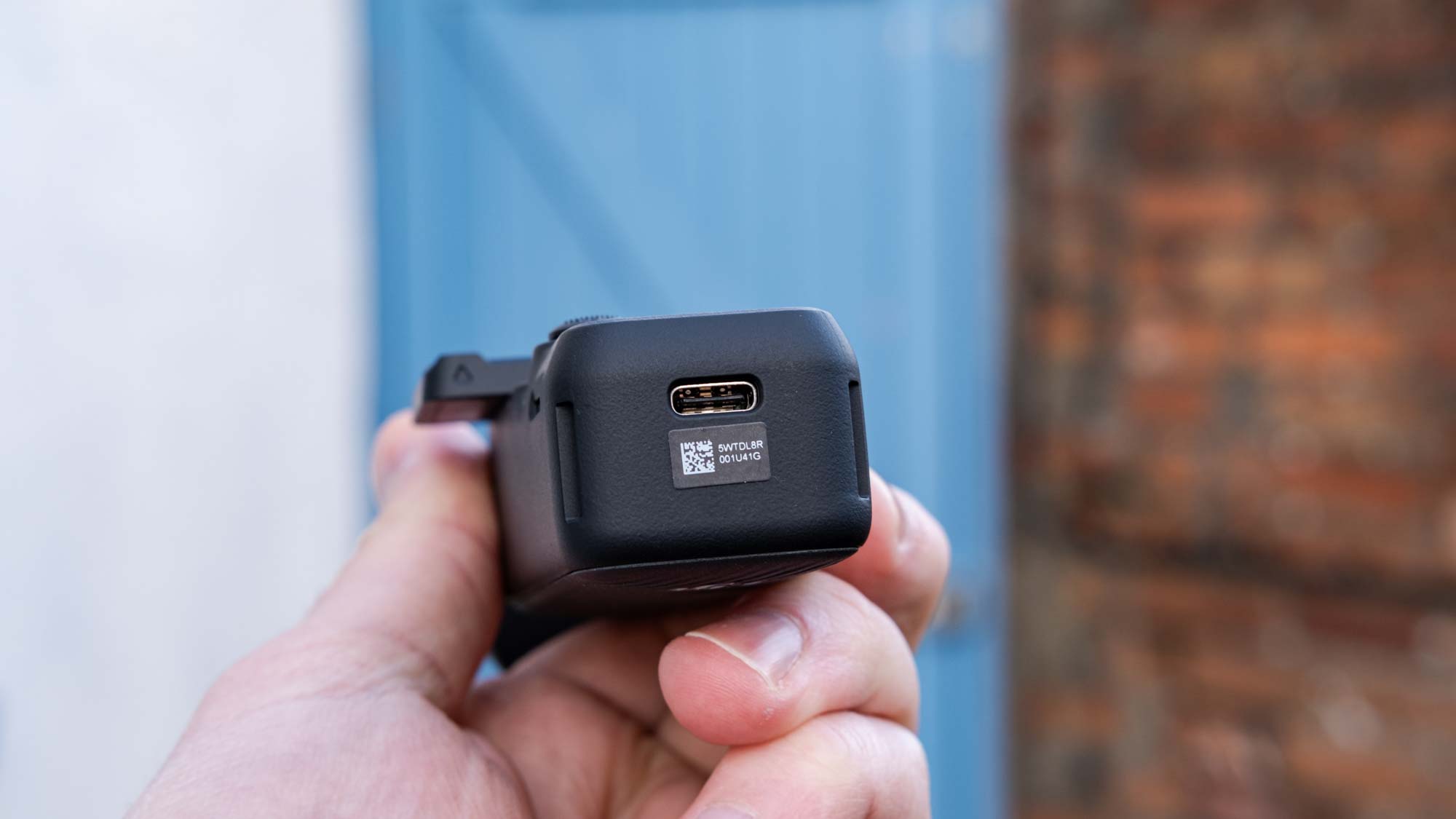
The Pocket 3’s menu system is similar to other DJI products, so it’ll feel familiar if you’ve used the DJI Osmo Action 4 or the Pocket 2. If you haven’t, you needn’t worry — the interface is simple but intuitively laid out and there isn’t too steep of a learning curve.
DJI Osmo Pocket 3 review: Autofocus performance
The Osmo Pocket 3 features DJI’s Active Track 6.0 autofocusing system, which comes with two AF modes. There’s face detection which will detect and track faces within gimbal limits. This works extremely well up close — when vlogging for example.
However, this mode is also good at detecting faces further away from the lens. I was surprised at how well the Pocket 3 did with further away subjects — at such wide FOVs, a subject standing a few meters away is a very small object in frame, but the Pocket 3 was still able to pick up faces, even in low light.
There’s also subject tracking. This isn’t intelligent automatic subject detection as you’d find on the best mirrorless cameras, but allows you to select a point in frame for the camera to track within gimbal limits. This tracking mostly worked well, but tended to drop subjects more frequently than the face tracking feature.
DJI Osmo Pocket 3 review: Video performance
Thanks to its three-axis gimbal, the Pocket 3 provides fantastic stabilization, delivering smooth, professional-feeling footage in most scenarios. There’s a joystick for ultra smooth gimbal movements, like panning or tilting up and down without moving the actual camera.
The gimbal has three modes to allow different amounts of gimbal correction for when the camera is moving about (so when you’re moving the whole camera, not just the joystick). FPV mode to stabilize high-intensity motion; Follow mode for things like vlogging and selfie shots; and Tilt Lock mode for landscape and flat panning shots.
Tilt Lock mode was particularly impressive, keeping the horizon perfectly level as I panned and raised and lowered the camera by hand. Follow Mode I found really effective for selfie shots and walking footage, where it mostly (although not entirely) smoothed out the bobbing effect of my footsteps. When paired with the subject tracking mode, I also found Follow Mode great for shooting some panning product shots. I did notice the occasional gimbal drift in Follow Mode, though, meaning I’d have to recenter it and potentially spoil a take.
The Pocket 3 can shoot in 4K/60p in standard video mode when shooting in horizontal 16:9 orientation, or up to 3K/60p in vertical 16:9, making it a great all-round tool for both standard video or vertical social media content. When using the Slow Motion mode, the Pocket 3 shoots at up to 4K/120p, for high resolution slow mo.
At higher video resolutions and framerates, the Pocket 3 will overheat, but holds out impressively before doing so. Shooting stationary at room temperature, the Pocket 3 lasted 70 minutes continuous shooting at 4K/60p before overheating — that’s not bad at all.
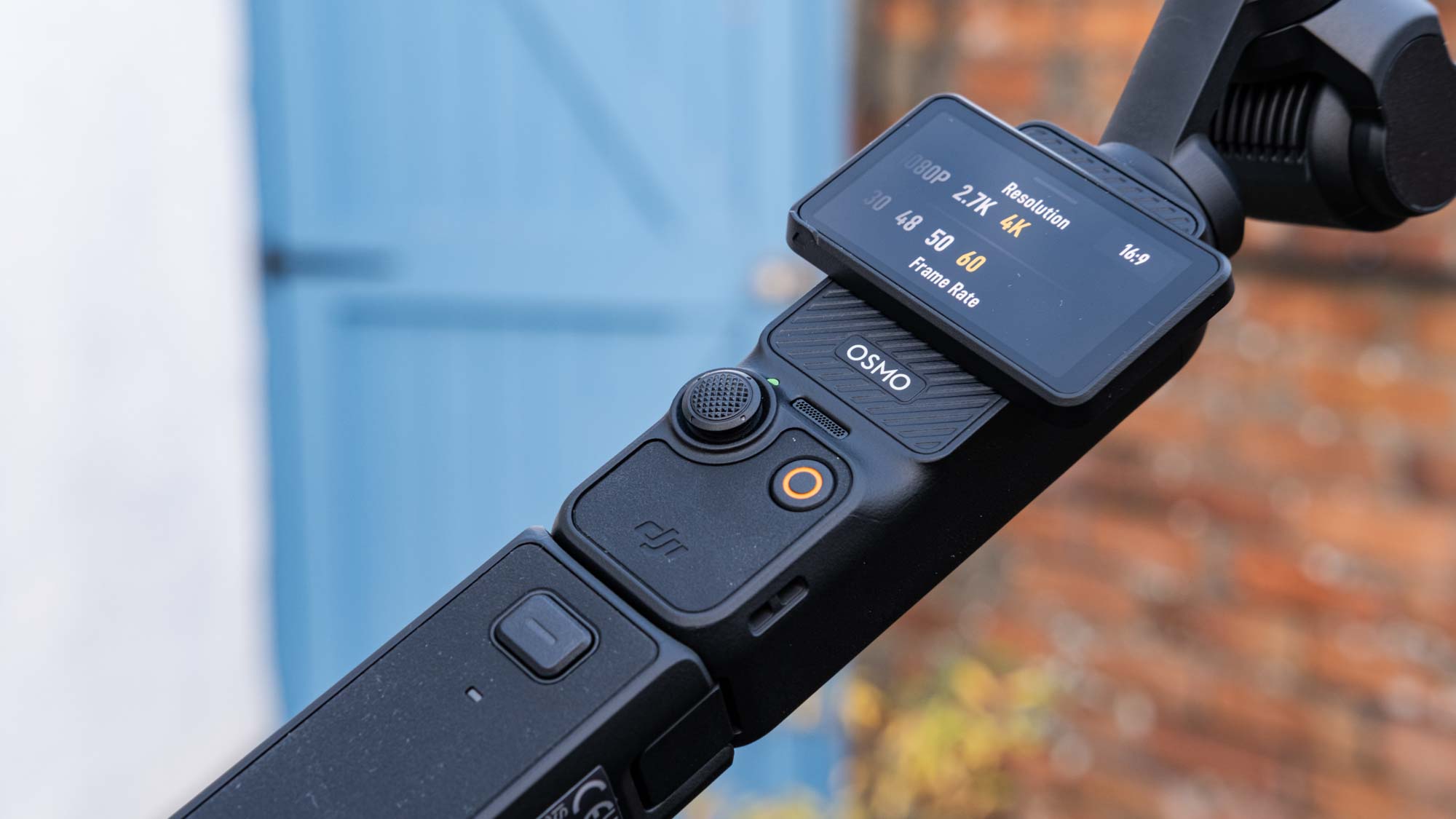
The Pocket 3’s only recording format is MP4, which may disappoint those looking to use it as a supplementary camera for professional work. However, the camera does offer D-Log and 10-bit recording to allow for wide dynamic range capture and greater control over color grading in post.
I was happy with the Pocket 3’s color rendition. On a bright, sunny day shooting at the beach, the Pocket 3 rendered the sky a deep, vivid blue, but the footage still felt lifelike and natural. However, as with other DJI cameras like the Osmo Action 4, I find it a little disappointing that the Pocket 3 offers no color filters in camera — something you can find on the best action cameras from rivals, for instance. You can swap to 10-bit HLG or D-Log, or you can apply a Glamour Effect filter via the Mimo app which adjusts skin tones, but it’d be nice to see more creative filters to allow users to apply striking aesthetics straight out of camera, as you get with rivals like the Insta360 Go 3. You can apply filters via the Mimo app after shooting.
While manual exposure controls are available, I just left the Pocket 3 in auto mode and it did a great job metering. I shot in some particularly tricky light and the camera mostly exposed everything correctly. The only exception was when shooting into bright sunlight with my face in shade — the camera blew out the background but this was to keep my face exposed, which is what you’d want when vlogging.
The Pocket 3 features a 1-inch sensor, an upgrade from the 1/1.7-inch sensor in the Pocket 2, producing cleaner images in low light. I shot some nighttime footage in standard Video mode at 4K/60p, and the Pocket 3 did a solid job: there was some noticeable noise, but nothing destructive.
I then tested the Low Light mode, which locks the camera at 30p when shooting in 4K. This was very impressive and makes a noticeable difference to low light imagery. The camera captured a much wider dynamic range than in Standard mode, and delivered a generally brighter image. It even picked up a flock of seagulls flying against the night sky.
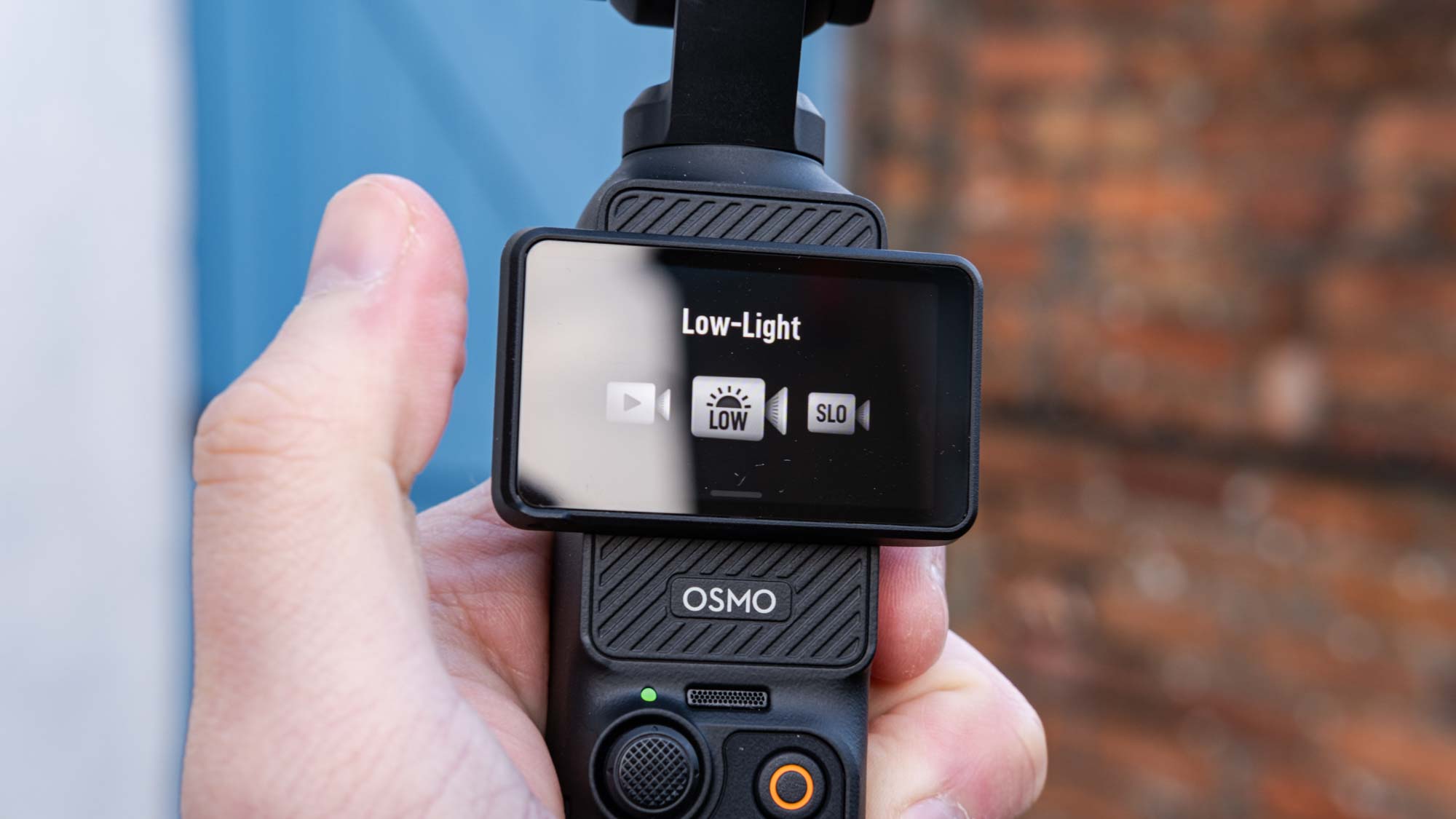
The Pocket 3 also offers some extra video and photo modes, including time lapse and panorama modes. There’s also a really cool Spin Shot setting, which rotates the gimbal 90 or 180 degrees with a tap for perfectly centered and stabilized spins.
DJI Osmo Pocket 3 review: Audio performance
The Osmo Pocket 3’s basic audio performance is nothing to write home about. The internal microphone is okay if you don’t have anything else, but produces tinny sound and is very susceptible to wind noise (you can hear this demonstrated in the walking and joystick panning test videos above). We’d definitely recommend hooking up an external microphone.
The microphone supplied with the Creator Combo is the DJI Mic 2, and it’s extremely good, cutting down wind noise massively, even at a windy beach. This was so effective that in the video demonstrating Tilt Lock mode above, the microphone even picked up the sound of pigeons cooing over the noise of the wind.
As I touched on earlier, though, the only microphones that will work wirelessly are DJI mics. There’s no option in the menu to scan for or connect to 3rd party mics wirelessly, forcing you to hook them up via USB-C. If you want to do this, you’ll definitely want to purchase the DJI Expansion Adapter, which features a cold shoe — otherwise you’re left either holding the mic or leaving it dangling below the camera. Again, it’s worth getting the Creator Combo for the convenience of the wireless DJI mic alone.
DJI Osmo Pocket 3 review: App
The Pocket 3 connects to your smartphone using the DJI Mimo app. The app connected quickly and seamlessly to the device in testing, and reliably held connection with no significant disruptions while I was using it.
The Mimo app allows you to remotely control the Pocket 3 and do everything you can on the camera itself, but with a bigger screen and easier to navigate interface. It also unlocks some extra functionality versus the standalone camera, including hyperlapse video recording, viewing glamor effects on screen, and live streaming. This makes the Pocket 3 and Mimi app ideal for solo content creators and home vloggers/streamers.
The Mimo app is where you’ll be able to apply creative filters to your content, but only in retrospect — you can’t shoot in a creative color profile, for example. It’s also where you can apply some basic edits to footage you’ve shot, like tweaking exposure. For any serious editing of videos, though, DJI prompts you to download a third party video editing application, which I’m not a fan of. Insta360’s app, for example, gives you a wide range of editing functionality all in one place.
DJI Osmo Pocket 3 review: Battery life
DJI rates the Pocket 3 for 166 minutes of footage at its lowest resolution and framerate of 1080p/24p. Using the internal battery, the Pocket 3 recorded 113 minutes of 4K/60p footage in testing, so almost two hours, which is fairly impressive.
The spare battery included with the Creator Combo provides an additional 60% charge, so with that you’re looking at an extra hour plus change, so about 3 hours of 4K/60p recording. The Pocket 3 also features fast charging and can charge 80% in just 16 minutes, leading to almost no downtime when I plugged in the spare battery pack after a dead battery.
DJI Osmo Pocket 3 review: Verdict
The DJI Osmo Pocket 3 is a fantastic little camera. In fact, if it weren’t for the proprietary wireless microphone connectivity and sub-par smartphone app versus rivals, the Pocket 3 would get a full 5 stars.
The Pocket 3 is not a revolution but an evolution of the Pocket 2, but it improves on its predecessor in really key ways, such as the new screen and larger sensor. As such, I think it’s well worth buying the Pocket 3 over the Pocket 2, and I’d even say it’s worth the upgrade from old to new.
But what I love most about the Pocket 3 is how versatile of a tool it is. I can see it being perfect for a whole variety of users. It’ll be ideal for vloggers shooting outdoors content, or YouTubers/streamers shooting from home. It’ll be a great camera for simply capturing family trips or holidays. Heck, I can even see it being a viable supplementary camera for professional work too — a wedding photographer could feasibly use the Pocket 3 to capture the up-close action of a wedding dance floor, for example, while I can see it being of use in my own arsenal for smooth product video footage. If any of that resonates with you, definitely buy the Pocket 3.

Peter is Reviews Editor at Tom's Guide. As a writer, he covers topics including tech, photography, gaming, hardware, motoring and food & drink. Outside of work, he's an avid photographer, specialising in architectural and portrait photography. When he's not snapping away on his beloved Fujifilm camera, he can usually be found telling everyone about his greyhounds, riding his motorcycle, squeezing as many FPS as possible out of PC games, and perfecting his espresso shots.
